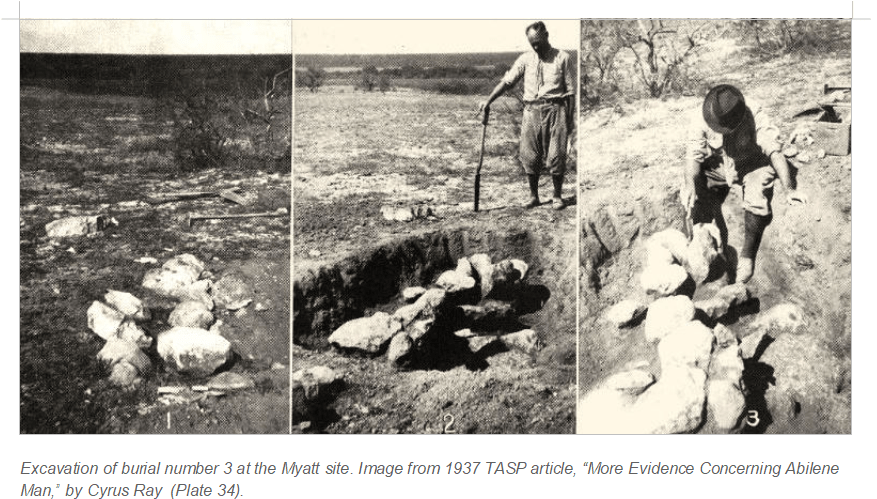
Along the creeks and rivers and on the high ridges of West Central Texas, within an approximate circle of 14 contiguous counties stretching from Brown to Taylor and Coke counties, and north to the Salt Fork of the Brazos River, the remains of ancient rock cairns can still be seen. The cairns are the relics of an older civilization, erected by inhabitants that settled here before the more nomadic and warlike Apaches and then Comanches. The people who built these structures are still a mystery today. What kind of people were they, and why did they build so many of these rock mounds?
I think the answer is truly complicated. While some of the structures were definitely simple graves, and the skeletal remains of quite a few individuals have been recovered from some of those that were not destroyed by treasure hunters or the idly curious, other mounds were built for separate purposes. The remains of kitchen middens, and what might have been buildings that served an unknown purpose, have been documented. What that purpose was, we will likely never know. The stone kitchens, identified by burn marks from perhaps centuries of fires, were used to cook meals for a settled, presumably agriculturally oriented people group. This group seems to be forgotten by history. The area was rich in water, provided a mild climate and plenty of game, and would seemingly have been ideal for long term settlements of more peaceably inclined peoples.
Early records of the stone cairns in our area are hard to find. The Spanish were out here looking for gold, not studying people groups, although some documentation exists from the Spanish to lend credence to the idea that these mound-builders were Jumanos, a tribe known to have lived along the Rio Grande in Texas. The Anglo settlers wanted land and were engaged in various battles with native inhabitants that probably did not lend time to or encourage reflections on archeological specimens.
Local historian Leona Banister Bruce, daughter of early settler and Texas Ranger John Banister, did however, briefly, include a description of the cairns in one of her books. Seems they were once bigger and there were a lot more of them than there are now. In the book, Santa Anna’s Peak, Bruce wrote, “But even an untrained archeologist can read the evidence of a populous, settled civilization, in the thousands of kitchen middens which still rim the water courses, the Jim Ned and the Pecan Bayou, the Colorado and its smallest tributaries; these ‘Indian mounds,’ where they have not been disturbed by the plow or the road-grader or the investigative pickaxe of the treasure hunter, are still two to six feet high, masses of fragments of the crumbled stones of the cooking fires which must have been the accumulation of decades or even centuries.”
According to Texasbeyondhistory.net (which has a great series of articles on the subject of the cairns) “Cairn burials in this region appear to be mainly a Late Prehistoric phenomena dating from roughly A.D. 800 to about A.D. 1300, although there is some evidence suggesting the tradition began earlier. Beyond that tenuous time frame, there is little known about the culture that created them, or the circumstances of the deaths of those buried there.”
Taking a drive along the ridges and hills in our surrounding area, especially on the back roads where large ranches have sometimes preserved the stone monuments, it is still possible to spot some of the cairns. They were often built along the tops of ridges, particularly where the views are spectacular. Maybe they wanted their dead to see a long ways, or maybe they enjoyed a kitchen with a scenic touch. Maybe both.
The cairns still visible today are not as large as what was described by Bruce, at least not any I have seen, and they are far less numerous than apparently they once were. Nevertheless, a few are still scattered around here and there. I love to see them, to think of what life must have been like here for the people who built them. There’s both comfort and a sense of mystery in knowing others have come and gone in this land long before we were here. If the world doesn’t end because of craziness from our leaders, we also will come and go here, and maybe leave something behind as well, so those who come later can wonder.
***
Diane Adams is a local journalist whose columns and articles appear periodically on BrownwoodNews.com
